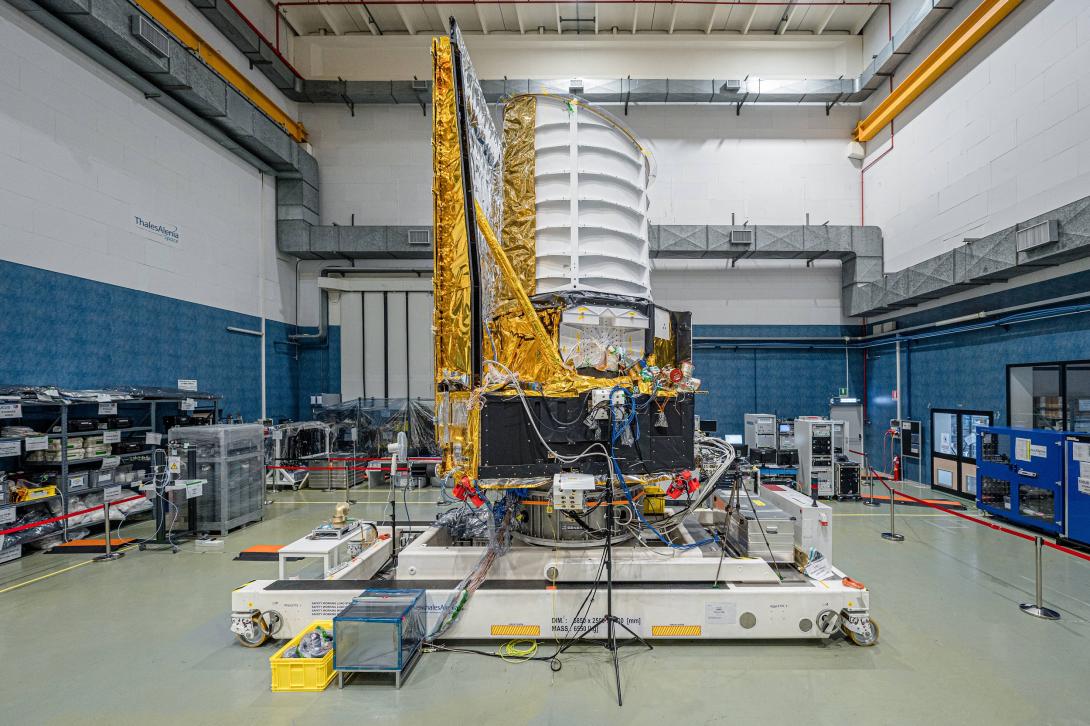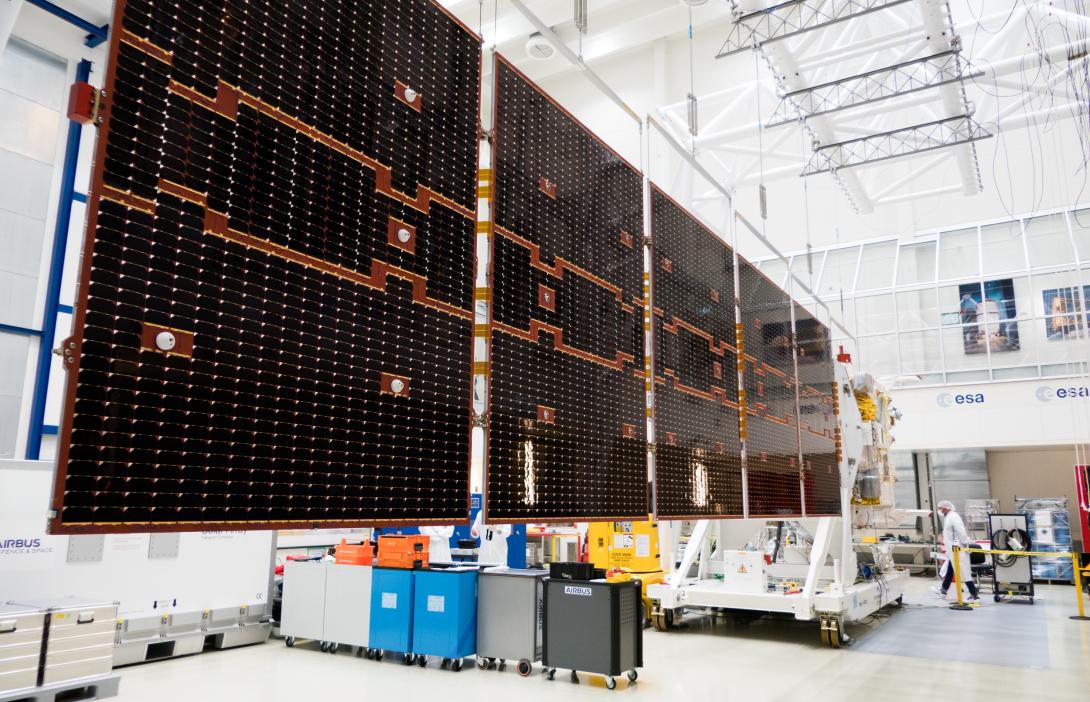Two future ESOC missions reach important milestones
The European Space Agency’s operations centre, ESOC, is trusted to operate the Agency’s most advanced and complex missions. Two such ESA satellites planned for launch next year have recently reached important development milestones as they are prepared for their missions to study the dark Universe and the impact of clouds and aerosols on our changing climate.
The rising number of new ESA missions, combined with the ability of our engineers to keep existing satellites in orbit far beyond their expected end of life, is driving the need for innovation in mission operations. ESOC is working with its European industrial partners to increase the use of artificial intelligence for automation in mission operations and expand the capacity of our deep-space antenna network to ensure we can continue to accommodate ESA missions providing high value to European science, industry and society.
Euclid integration wraps up
ESA’s Euclid mission will explore the evolution of the dark Universe. It will observe billions of galaxies out to 10 billion light-years, across more than a third of the sky, as part of a mission to determine the true nature of dark energy and dark matter.
Euclid will play a leading role in ESA’s provision of high-quality science data to the scientific community, and includes contributions from many national space agencies such as CNES, ASI and NASA. The mission will be flown from ESA’s ESOC mission operations centre alongside other world-renowned space observatories such as XMM-Newton, Integral and Gaia.
The Prime Contractor for the Euclid mission is Thales Alenia Space in Italy, who announced at the beginning of this month that all the integration activities for the Euclid satellite have all been successfully completed at the Turin plant and that Euclid will soon be packed up and transported to the Thales Alenia Space plant in Cannes, France, where teams will carry out the necessary environmental tests prior to the launch campaign.

© Thales Alenia Space
One of the instruments provided by Thales Alenia Space in Italy and recently integrated onto the main satellite body is Euclid’s K-band deployable and steerable high gain antenna. This antenna will be responsible for exchanging commands, telemetry and science data with ESA’s global Estrack network of deep-space ground stations – which are operated remotely from ESOC in Darmstadt, Germany.
EarthCARE stretches its wing

© ESA–M. Cowan
Meanwhile, ESA’s upcoming EarthCARE satellite mission has stretched its wing for the first time. EarthCARE is a joint venture between ESA and JAXA, the Japan Aerospace Exploration Agency. The mission will join ESA’s family of Earth Explorers, and will be flown from ESA’s ESOC mission operations centre alongside fellow Earth Explorers Aeolus, Cryosat and Swarm, which are on missions to unravel the mysteries of Earth’s winds, icesheets and magnetic field respectively.
Engineers recently gently unfolded the satellite’s huge five-panel solar wing to test that it will deploy correctly once it is in space. The solar wing is a critical part of the satellite, providing the energy for EarthCARE to do its job: to quantify the role that clouds and aerosols play in heating and cooling Earth’s atmosphere.
ESA’s Earth Explorers are world-class ESA research missions and have continued to demonstrate how breakthroughs in satellite technology, satellite operations and novel observing techniques can deliver an astounding range of scientific findings about our planet.
Our world, and the life it sustains, is under increasing pressure, particularly as a consequence of climate change. The need to better understand how our planet functions as a system is more urgent than ever before to ensure that we are equipped with key information for decision-making that will benefit society.



